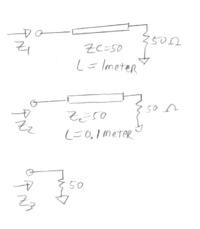Chinix
Newbie level 5
I'm new in microwave design and confused by some concepts.
In a two port network, S11 = b1/a1 when a2 = 0, which means the load side acheives impedance matching.
But when I measure S11 with a network analyzer, S22 is poor, does this means the measured S11 is not correct since the load side is not matching?
How to assure that a2 = 0 in a S11 measure/simulation?
In a two port network, S11 = b1/a1 when a2 = 0, which means the load side acheives impedance matching.
But when I measure S11 with a network analyzer, S22 is poor, does this means the measured S11 is not correct since the load side is not matching?
How to assure that a2 = 0 in a S11 measure/simulation?
